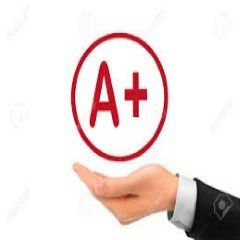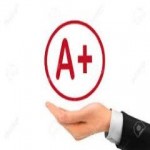Econ 355 International Trade Final Exam Complete Solutioncorrect answers
Econ 355 International Trade final exam solution correct answers
1 Detecting Trade Diversion (22 points)
The US has entered a preferential trade agreement with Canada and you are asked to evaluate
whether this agreement is likely to be bene
cial for the US. You are given the following informa-
tion. Tari¤s on imports from Canada to the US have dropped by 5% for cars, by 10% for computers
and by 20% for shoes. For those goods, comparing the period before to the period after the PTA,
trade ows have changed according to the following table:
Cars Computers Shoes
% change in exports from Canada to the US 3% 5% 7.5%
% change in exports from Canada to Japan 1% 2% 1%
% change in exports from Japan to the US 1% 2.3% 3.1%
% change in exports from Japan to Italy 2% 4.1% 6.2%
% change in exports from the US to Canada 4% 1% 4%
1. Explain what is trade diversion in general and how it a¤ects the welfare gains following a preferential trade agreement.
2. For the speci
c case of the PTA between the US and Canada, explain whether you detect trade diversion using the logic of the paper by Romalis (2007) that we discussed in class.
2 Krugman model (28 points)
Consider the Krugman model we saw in class. I am giving you the formulas for the PP curve and
the CC curve:
PP : p = c +
1
bn
CC : p = c +
Fn
S
where the demand parameter b = 2; the
xed cost of production F = 4, the marginal cost c = 2
and the size of the Home market SH = 128.
1. What does the PP curve represent? Why is it downward-sloping? Represent it in a graph.
2. What does the CC curve represent? Why is it upward-sloping? Represent it in the same graph as the PP curve. Calculate the price and number of
rms in equilibrium in the Home market.
3. Consider another country, Foreign, which has size SF = 72. Calculate the number of
rms and price for the Foreign country in autarky.
4. Now the two countries start trading. Imagine that in the instant the two countries open up to trade, the number of
rms on the market does not change, i.e. the number of
rms in the market is given by the sum of the
rms in autarky in both countries. What is the price that prevails in the market under this assumption? Why is this not a long-run equilibrium?
5. Now allow for
rms to exit and enter the market. What will
rms do? Why? Describe what happens to the price as the number of
rms adjust to its long-run equilibrium.
6. Are the gains from trade smaller or larger when the
xed cost of production F is smaller? Explain.
7. Comment on the source of the gains from trade when b is very large (if you need a number use b = 100). Illustrate your answer using a graph.
3 Quotas and tari¤s (26 points)
A small country has the following demand for cars:
D = 30 p
In the country there is a single producer (monopolist) of cars and this producer has constant marginal cost equal to 10, but it cannot produce more than 10 cars because of limited capacity.
Imagine that the world price of cars is 8.
1. How many cars does the country import under free trade? What price do consumers pay for a car? How many cars are produced domestically?
2. The country now imposes a tari¤ t = 4 per car imported. How many cars are imported and produced domestically? What price do consumers pay for a car?
3. Instead of a tari¤ the country now imposes a quota equal to the level of imports you alculated in part 3. How much output does the monopolist produce now and what is the price that consumers pay per car?
4. Comment on your results and their implications for welfare.
4 True/False/Uncertain (6 points each)
For ALL the following statements:
indicate whether it is true, false or uncertain
EXPLAIN your answer
only two or three sentences are expected for each question
use a graph where appropriate or just words
1. The fact that the price of cars manufactured in the US rose following the VER imposed by Japan is evidence in favor of the hypothesis that US car manufacturers had monopoly power.
2. The Melitz model explains why exporting
rms tend to be larger and more productive than non-exporting
rms.
3. A production subsidy is less distortionary than an export subsidy.
4. In the Airbus and Boeing case, a strategic subsidy by the US government to Boeing is welfare-improving for the US as long as it gives incentives to Boeing to enter the market.
Econ 355 International Trade Final Exam Complete Solutioncorrect answe
Econ 355 - International Trade 2013-14 Professor Matilde Bombardini Non-Cumulative Final Exam Solution 1. Detecting Trade Diversion (a) Trade diversion is the eect arising after the creation of a preferential trade agreement that causes trade ows to be diverted from the most ecient producers to more inecient producers belonging to countries within the preferential trade agreement. It causes a we...





Askwilliam
Senior JournalistSell Your Solution Report Solution Support Center
Online Users
-
 Askwilliam
Today
Askwilliam
Today

A+ - Thank you!
Thanks for the positive feedback!